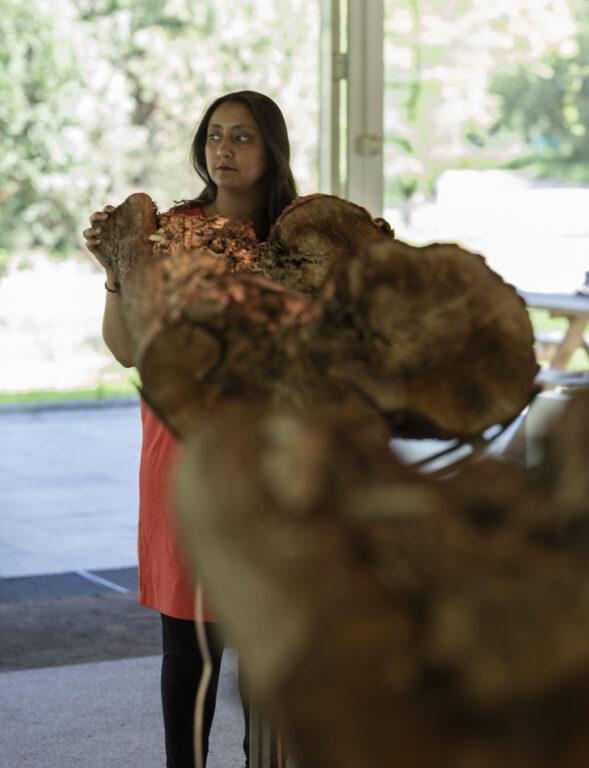intro
Plantas Harmonias: connecting continents through medicinal and ritual plants is a solo exhibition in which Farah Rahman presents existing and new work that she continues to develop during the exhibition’s opening hours. Plantas Harmonias is part of a series of solo exhibitions at Zone2Source, in which artists share their artistic research and making processes with the public.
The artist as ethnobotanist
Farah’s artistic research practice is similar to the work of an ethnobotanist, who analyses complex relationships between plants, people and cultures through field research. In doing so, Farah starts from her own family history in Suriname and India. She creates mutlisensorial works involving long-forgotten memories and political and spiritual relationships between people and plants. How can we reshape our relationship to plants—other than as food sources or decoration—by connecting to the complex cultural meanings in which humans and plants are always intertwined?
The world exhibition
The Amstelpark was created for a world horticultural exhibition, the 1972 Floriade: a typical modern colonial phenomenon where plants, animals and people are taken out of context and detached from their traditions and relationships. In Plantas Harmonias, Farah Rahman explores the cultural meanings of trees and plants from various places around the world and incorporates them into new artworks.

Installation shot ‘Plantas Harmonias: connecting continents through medicinal and ritual plants’, Farah Rahman, 2023. Photo: Marjolein Vinkenoog
The exhibition as a place for collective research
For Plantas Harmonias, Farah takes visitors along to collectively explore during her working sessions in the exhibition space, workshops and expeditions in the Amstelpark. This way, the exhibition becomes a place for presentation and fieldwork, with the Amstelpark as a laboratory for collective research into the complex (post)colonial relationships between people and plants.
Willows and Spores
Presented in the exhibition is an installation of five treetrunks, Sensing Willow, which is an investigation into how a forest can be felt and experienced by listening to the sound of the tree and its surroundings. In the back space you can find the installation Symphony of Spores, which projects organic materials into the space. Another part of the exhibition is set up as a workshop, where each weekend Farah will develop her new research projects. Towards the end of the exhibition, Farah will develop a map that depicts her research into the relationships and migration of the plants in the Amstelpark.
Workshops
During the exhibition Farah leads public plant printmaking workshops. While collecting plants and materials gathered around the Amstelpark, we delve deeper into their meaning and history, allowing you to build your own personal narrative around the plants you choose. At the end of the workshop, participants can take their own cyanotype prints home. The kurkuma prints were left behind and continued to develop as part of the exhibition.
Visiting the exhibition
The exhibition can be visited from April 23 through June 18, from Friday to Sunday between 13:00 and 17:00 at het Glazen Huis, Amstelpark, Amsterdam, and on request.
Het Glazen Huis